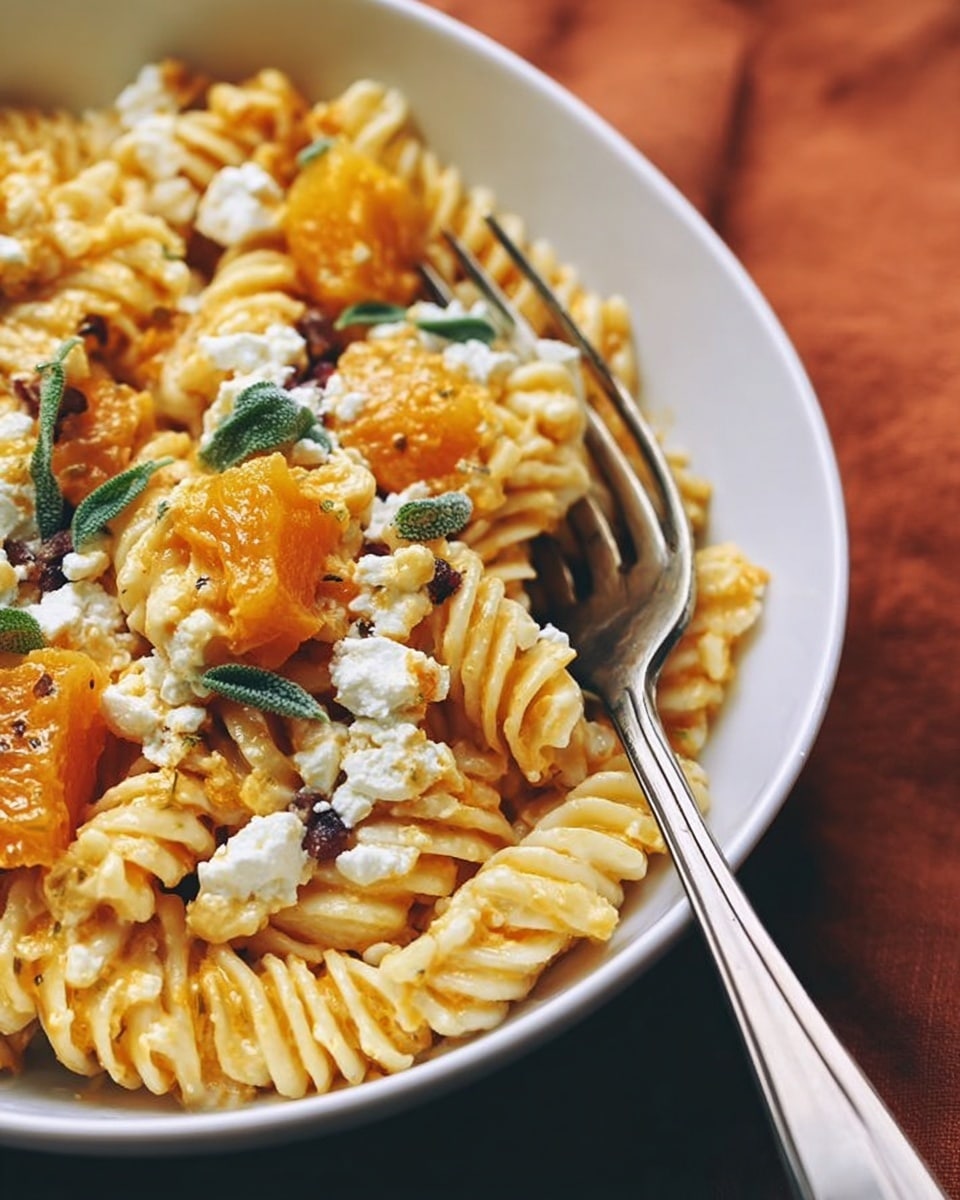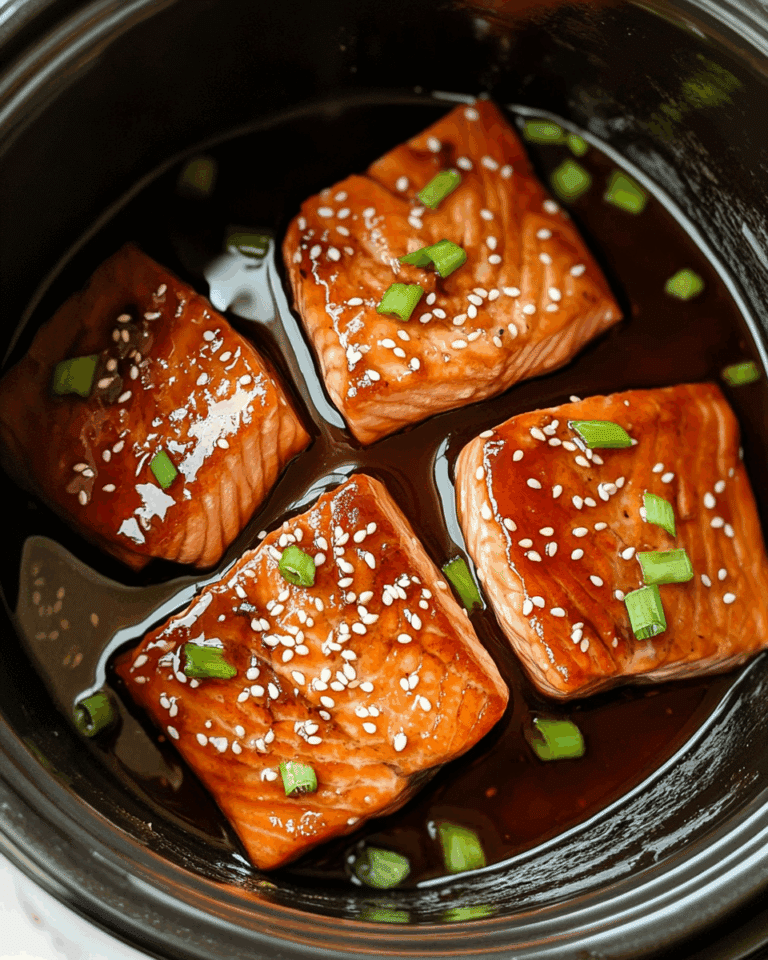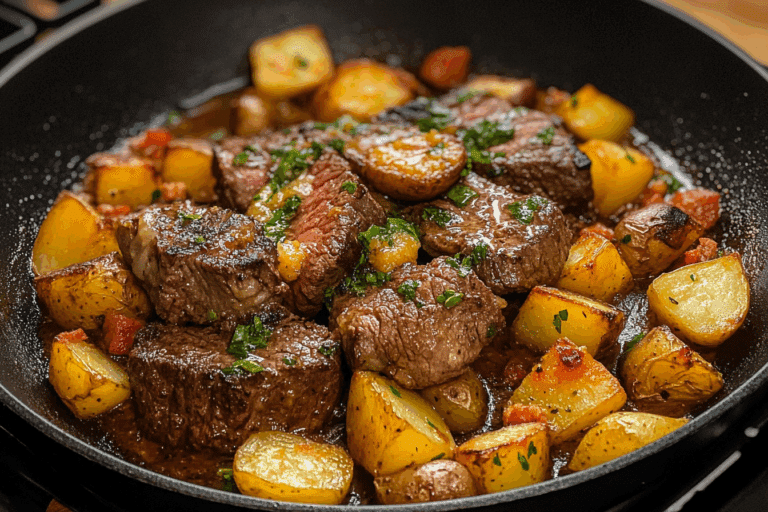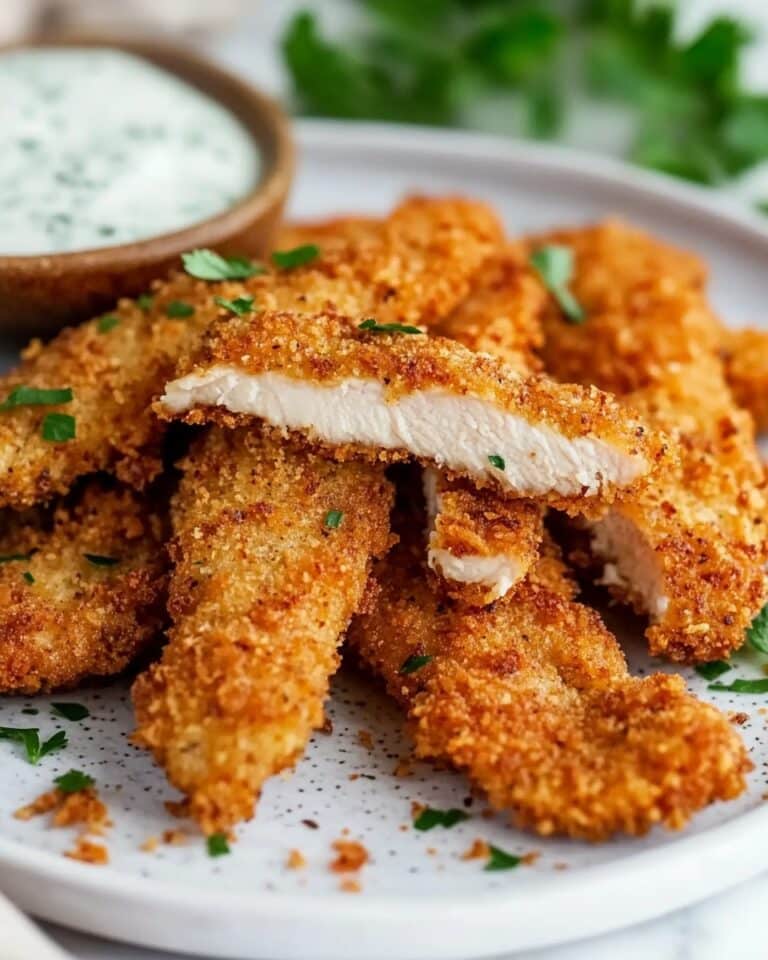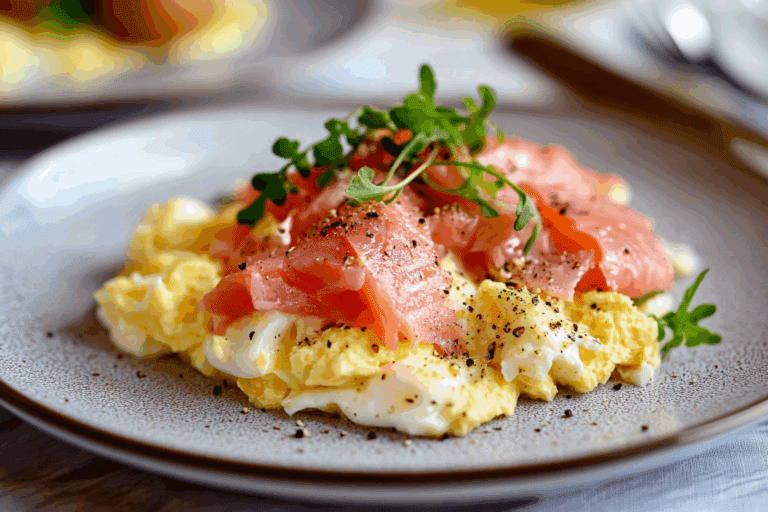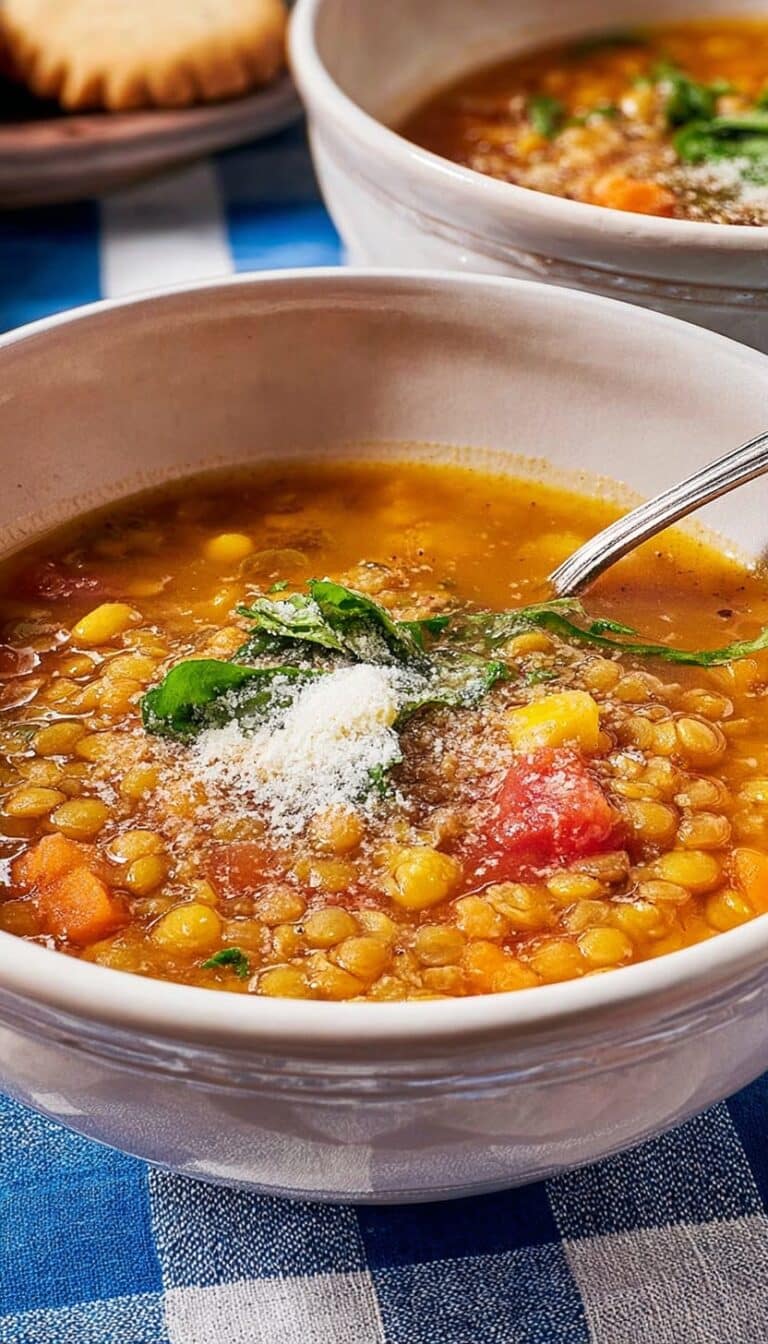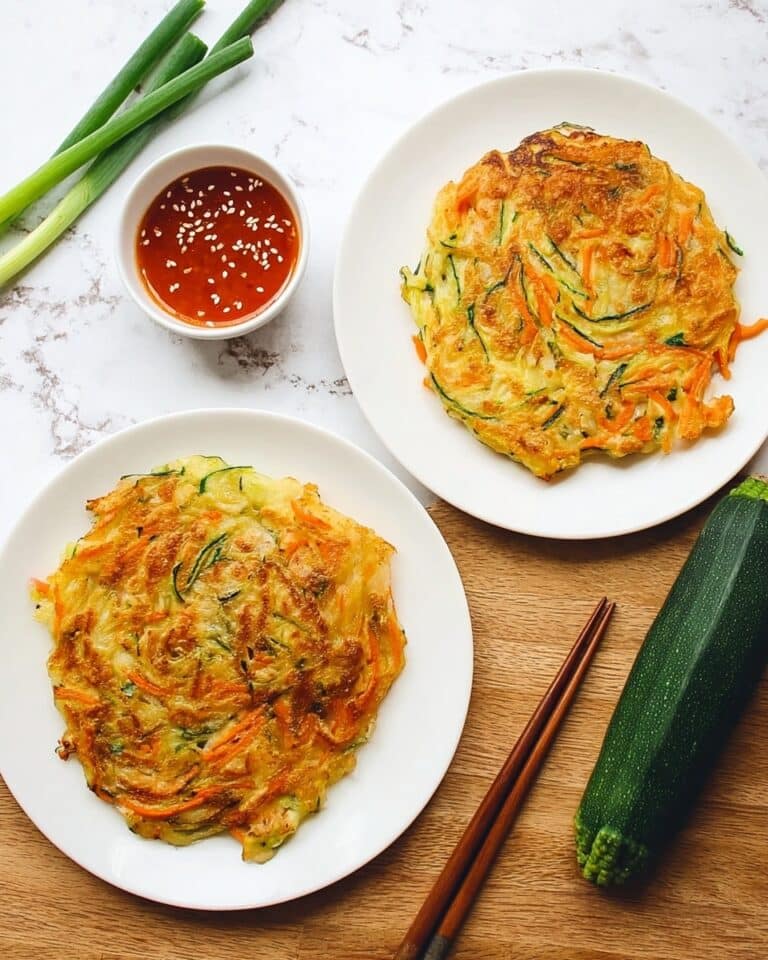Baked Feta and Butternut Squash Pasta with Sage and Garlic Recipe
Let me tell you about this Baked Feta and Butternut Squash Pasta with Sage and Garlic Recipe — it’s become one of my absolute favorite cozy weeknight dinners. There’s something magical about the combination of creamy baked feta and sweet roasted butternut squash, all brought together with fragrant sage and garlic that makes this pasta dish feel both rustic and special. Plus, it’s surprisingly easy to pull off, even on a busy evening when you want comfort without fuss.
What I love most is how this recipe works beautifully through fall and winter, when butternut squash is at its peak and you’re craving warm, hearty meals. The best part? Baking the feta alongside the squash loosens it up to create a luscious sauce without drowning the vibrant flavors. Trust me, once you try this Baked Feta and Butternut Squash Pasta with Sage and Garlic Recipe, it’ll become your go-to pasta hack that feels like a warm hug on a plate.
Ingredients You’ll Need
Every ingredient in this Baked Feta and Butternut Squash Pasta with Sage and Garlic Recipe plays an important role—from the natural sweetness of the butternut squash to the creamy tang of the feta. I always recommend picking fresh, fragrant sage leaves and a block of good-quality feta for the best flavor impact.
- Butternut Squash: Choosing a ripe, firm squash ensures sweetness and softness when roasted. I like using about one large squash for this recipe.
- Olive Oil: Use a fruity extra virgin olive oil if you can—this adds a subtle richness to the dish.
- Kosher Salt: Essential for seasoning the squash well; I often sprinkle a bit more at the end to taste.
- Red Pepper Flakes: Optional but adds a nice little kick that wakes up the flavors.
- Feta Cheese (8 oz block): Baking the whole block melts it beautifully—avoid crumbled feta here to keep the sauce silky.
- Pasta (rotini, orzo, or ditalini): I love rotini because it holds onto the sauce in its spirals, but orzo or ditalini work beautifully too.
- Fresh Sage: Fresh leaves give a herbaceous, slightly peppery note. Mince it finely so it disperses evenly.
- Garlic: Three cloves finely minced; the aroma is irresistible once it cooks with the sage.
- Hot Honey: Adds subtle sweetness with a touch of heat—feel free to swap in regular honey if you want milder flavors.
- Fresh Cracked Black Pepper: The fresh grind really elevates the taste at the end. Don’t skip it!
Variations
One thing I love about the Baked Feta and Butternut Squash Pasta with Sage and Garlic Recipe is how you can tweak it to suit your mood or pantry. I often play around with add-ins or swap ingredients based on what I have or dietary needs.
- Variation: To add protein, I sometimes toss in cooked chickpeas or crispy pancetta. The salty punch pairs wonderfully with the creamy feta and sweet squash.
- Variation: For a vegan version, try substituting the feta with a plant-based cheese that holds up to baking, and use maple syrup instead of honey.
- Variation: If you prefer deeper autumn flavors, sprinkle toasted walnuts or pumpkin seeds on top for extra crunch and nuttiness.
- Variation: Swap out the sage for thyme or rosemary if that’s what you have on hand—both herbs bring their own unique warmth.
How to Make Baked Feta and Butternut Squash Pasta with Sage and Garlic Recipe
Step 1: Roasting the Butternut Squash and Feta
Start by preheating your oven to 400°F (200°C). Peel and cube about 5 cups of butternut squash—it’s easiest if you cut it into even-sized chunks so they roast evenly. Place the cubes on a baking sheet, drizzle with ½ cup olive oil, and sprinkle with kosher salt and red pepper flakes if using. Nestle the whole block of feta right in the middle of the squash and drizzle a little olive oil over it too. Pop the tray into the oven and roast for 25-30 minutes, or until the squash is tender and the feta is golden and slightly bubbly. This step is key because it softens the squash and melts the feta into a creamy base you’ll mix into your pasta.
Step 2: Cooking the Pasta
While your squash and feta are roasting, cook your pasta according to the package instructions until it’s al dente. I prefer slightly firmer pasta here since it’ll get a lovely coating of that baked feta sauce. Drain it, but save about a cup of the pasta water—you’ll use that to loosen the sauce when you combine everything.
Step 3: Sautéing the Sage and Garlic
In a skillet over medium heat, warm a tablespoon of olive oil and add your minced sage leaves and garlic. Stir constantly for about 1-2 minutes until fragrant but not browned—this step infuses the oil with aromatic earthy flavor that makes the dish sing. If you overcook the garlic, it can get bitter, so keep an eye on it!
Step 4: Combining and Finishing the Dish
Once your squash and feta are done roasting, transfer them to a large bowl. Mash the feta and squash together with a fork or potato masher until creamy and well combined. Pour in the sage and garlic-infused olive oil, stir to mix, then add in the cooked pasta. Toss everything together, adding reserved pasta water little by little until you get a luscious, smooth sauce coating every bite. Finish with a generous drizzle of hot honey and a good grind of fresh black pepper, then give it one last toss before serving.
How to Serve Baked Feta and Butternut Squash Pasta with Sage and Garlic Recipe
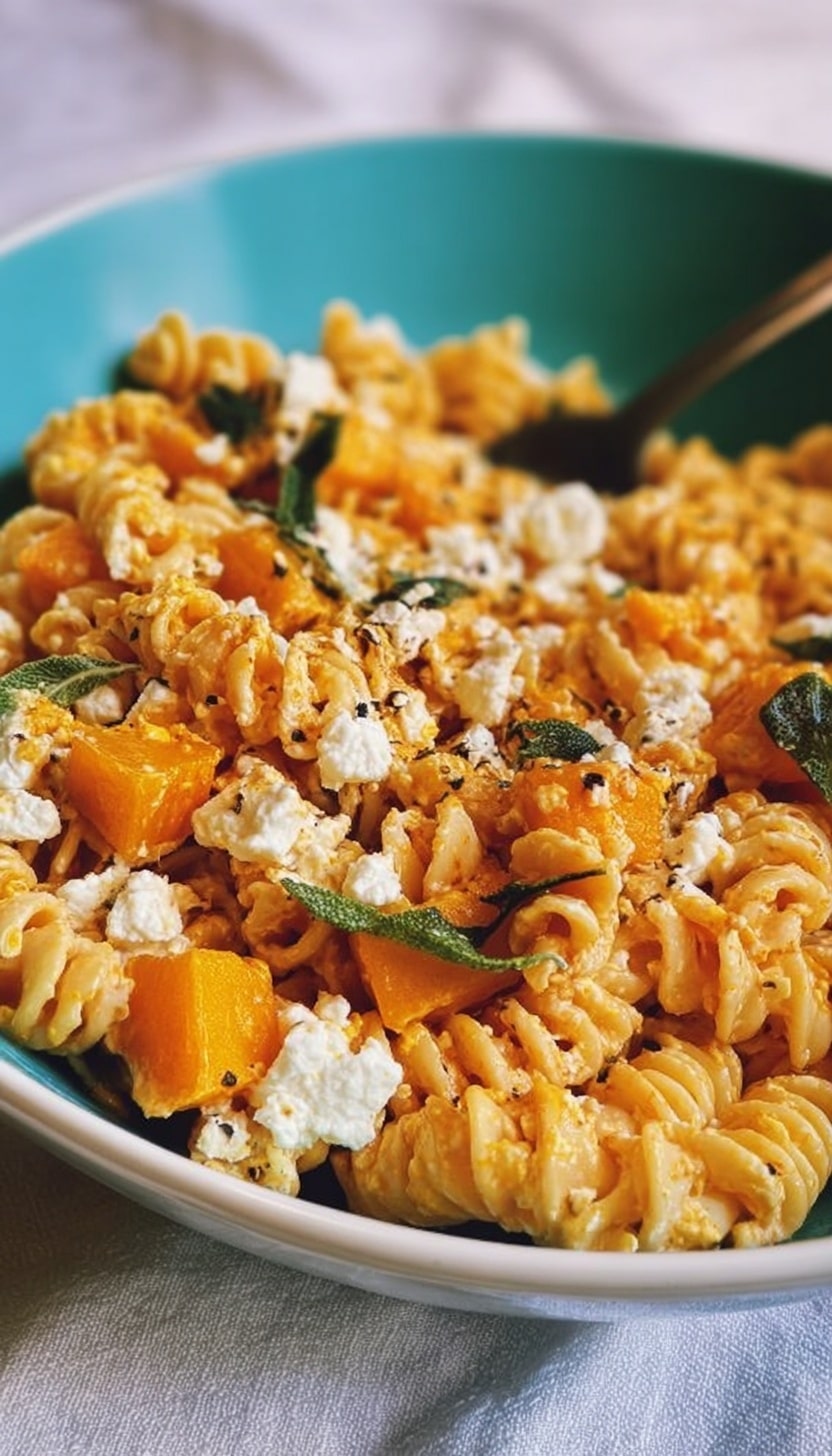
Garnishes
I love topping this pasta with extra fresh sage leaves for a pop of green and a fresh hit of herbal flavor. Sometimes I sprinkle toasted pine nuts or walnuts for texture. A little drizzle of good olive oil right before serving adds that beautiful glossy finish that’s so inviting.
Side Dishes
This pasta is a meal on its own, but I often pair it with a crisp green salad dressed lightly with lemon and olive oil to cut through the richness. Roasted Brussels sprouts or garlic bread are wonderful companions, too—perfect for soaking up any sauce left on the plate.
Creative Ways to Present
For a dinner party, I’ve served this pasta in individual shallow bowls lined with a sage leaf at the bottom—simple, elegant, and sets the stage for the flavors inside. You can also sprinkle edible flowers or microgreens on top for a festive touch that always impresses guests.
Make Ahead and Storage
Storing Leftovers
If you have leftovers, I recommend storing them in an airtight container in the fridge for up to 3 days. The pasta will soak up the sauce a bit as it sits, so it’s best to reheat gently with a splash of water or olive oil to bring it back to life.
Freezing
I’ve frozen this pasta once when I was prepping meals ahead, and it works okay, though the texture of the squash softens further. If freezing, portion into airtight containers and thaw overnight in the fridge before reheating slowly on the stove.
Reheating
Reheat leftovers over low to medium heat in a skillet with a splash of water or broth to loosen the sauce. Stir frequently to prevent sticking and so the reheated feta sauce stays nice and creamy instead of drying out.
FAQs
-
Can I use different types of cheese in the Baked Feta and Butternut Squash Pasta with Sage and Garlic Recipe?
Feta is key here because it softens when baked but holds its tangy flavor, creating a creamy sauce. Ricotta or goat cheese might work but won’t melt the same way, so the texture and flavor profile will change. I suggest sticking with feta or using a combination if you want to experiment.
-
What pasta shapes work best with this recipe?
I personally recommend small or medium-shaped pastas that hold onto the sauce well, like rotini, orzo, or ditalini. Their twists and curves catch the creamy feta and roasted squash mixture nicely for each bite.
-
Is this recipe gluten-free or can it be made gluten-free?
You can absolutely make it gluten-free by swapping out the pasta for a gluten-free variety, such as those made from rice, chickpeas, or lentils. Just be sure to check your ingredients for any hidden gluten if needed.
-
How spicy is the red pepper flakes addition?
The red pepper flakes add a gentle heat that you can control by the amount you use. I usually add just a pinch to give the dish a subtle warmth without overpowering the creamy, sweet flavors.
-
Can I prepare parts of this recipe ahead of time?
You can chop the squash and sage in advance to save time. Roasting the squash and feta just before serving keeps everything fresh and warm, but you could roast earlier and reheat gently if needed.
Final Thoughts
Honestly, this Baked Feta and Butternut Squash Pasta with Sage and Garlic Recipe feels like a hug on a chilly night—a perfect mix of sweet, savory, creamy, and herbal all in one bowl. I hope you’ll give it a try and make it your own. Whether it’s a simple dinner for yourself or something cozy to impress friends, this dish delivers comfort with a little gourmet flair. Can’t wait to hear how it turns out for you!
PrintBaked Feta and Butternut Squash Pasta with Sage and Garlic Recipe
This Baked Feta and Butternut Squash Pasta combines creamy baked feta with sweet roasted butternut squash, fragrant sage, and garlic for a comforting, flavorful vegetarian pasta dish. The feta and squash bake together to create a luscious sauce, while the sage and hot honey add a warm, aromatic touch. Perfect for a cozy dinner with simple, wholesome ingredients.
- Prep Time: 15 minutes
- Cook Time: 35 minutes
- Total Time: 50 minutes
- Yield: 4-6 servings
- Category: Main Dish
- Method: Baking
- Cuisine: Mediterranean
- Diet: Vegetarian
Ingredients
Vegetables and Herbs
- 5 cups Butternut Squash (about 1 large butternut squash)
- 10 leaves Fresh Sage, minced
- 3 cloves Garlic, finely minced
Dairy
- 1 8 oz block Feta Cheese
Pantry & Others
- ½ cup Olive Oil, plus more for drizzling
- 2 hefty pinches Kosher Salt (just shy of ½ tsp)
- 1 hefty pinch Red Pepper Flakes (optional)
- 1 lb Pasta such as rotini, orzo, or ditalini
- 1 tablespoon Hot Honey (regular honey is fine too)
- Fresh Cracked Black Pepper, to taste
Instructions
- Roast the Butternut Squash and Feta: Preheat your oven to 400°F (200°C). Peel and cube the butternut squash into bite-sized pieces. In a baking dish, toss the squash with half of the olive oil, kosher salt, and red pepper flakes if using. Nestle the block of feta cheese in the center of the dish and drizzle it with a little olive oil. Roast everything for about 30-35 minutes, or until the squash is tender and the feta is soft and golden on top.
- Cook the Pasta: While the squash and feta are roasting, bring a large pot of salted water to a boil. Cook the pasta according to package instructions until al dente. Reserve about a cup of pasta water before draining the pasta.
- Sauté Sage and Garlic: In a small skillet, heat the remaining olive oil over medium heat. Add the minced sage and garlic, cooking gently for 1-2 minutes until fragrant and the sage is crisp but not burnt. Remove from heat.
- Combine and Make the Sauce: When the roasted squash and feta come out of the oven, mash them together with a fork or potato masher to create a creamy sauce. Stir in the sautéed sage and garlic along with hot honey, adding a splash of reserved pasta water if needed to loosen the sauce.
- Toss Pasta and Serve: Add the cooked pasta to the baking dish and toss until well coated with the creamy feta and squash sauce. Adjust seasoning with fresh cracked black pepper and more salt if needed. Serve warm, drizzled with additional olive oil or hot honey for extra flavor.
Notes
- If you prefer a spicier dish, increase the red pepper flakes to taste or add a dash of crushed chili.
- This recipe works well with various short pasta shapes such as rotini, orzo, or ditalini.
- Hot honey can be substituted with regular honey and a pinch of cayenne pepper for a similar flavor.
- Leftovers can be stored in an airtight container in the refrigerator for up to 3 days and reheated gently to prevent the feta from drying out.

